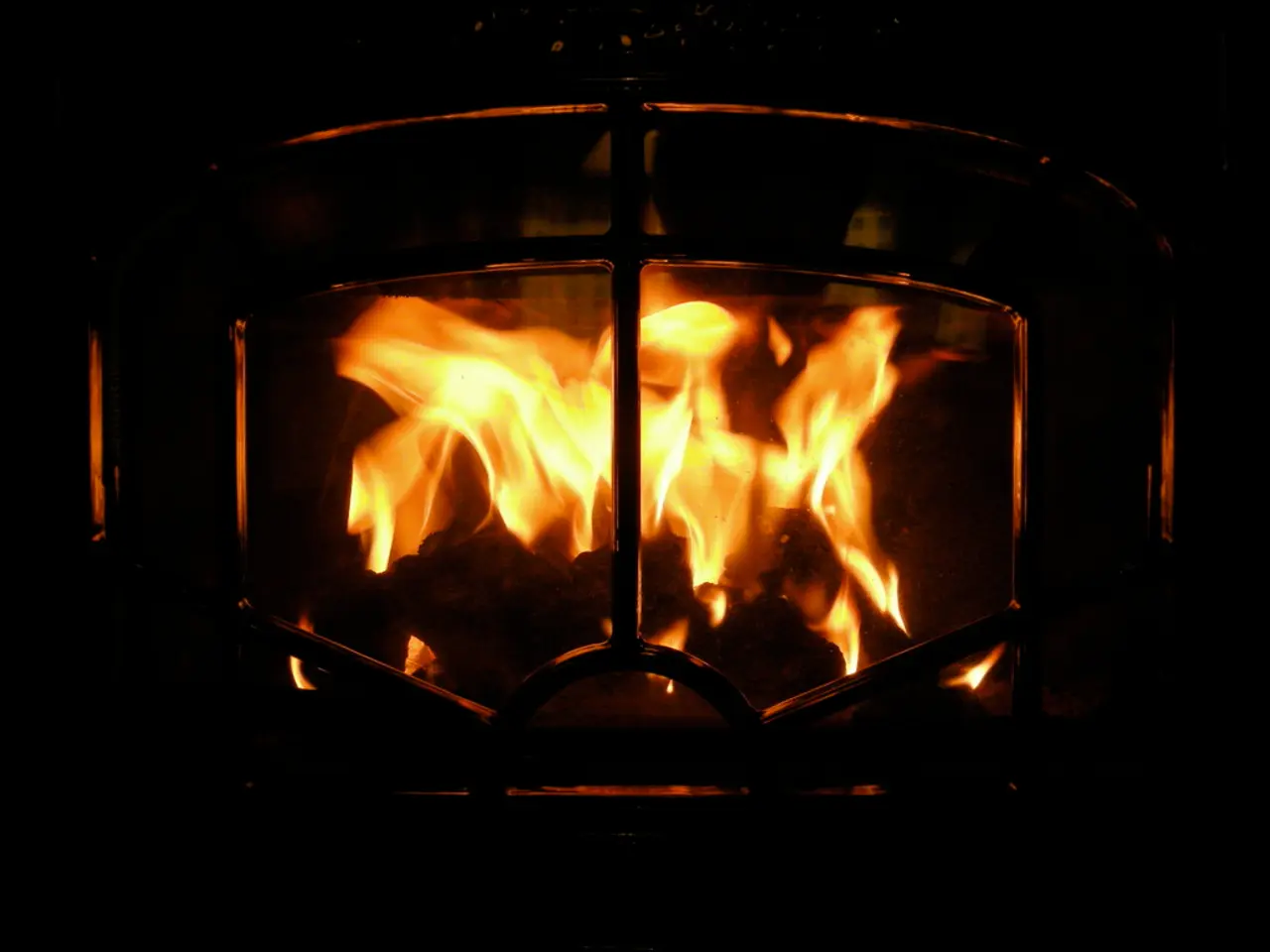Fireplaces may pose health risks due to emitted pollutants like soot, carbon monoxide, and nitrogen dioxide.
Wood-burning fireplaces, a popular choice for home heating and ambiance, can pose serious health risks, particularly for individuals with lung diseases. According to recent studies, smoke from wood fires contains a complex mixture of fine particulate matter (PM2.5), toxic gases, and bacterial toxins that can penetrate deeply into the lungs and even enter the bloodstream.
For people with chronic lung conditions like asthma and Chronic Obstructive Pulmonary Disease (COPD), exposure to wood smoke can exacerbate symptoms, leading to increased coughing, wheezing, shortness of breath, and phlegm buildup. Moreover, wood smoke exposure causes more air trapping in the lungs than other fuels, impairing oxygen intake and carbon dioxide removal, which can worsen lung mechanics, especially in susceptible individuals.
Exposure to wood-burning smoke can also trigger asthma attacks and COPD exacerbations, reducing lung capacity and forcing patients into health crises. The smoke inhalation doesn’t only harm the lungs but also increases inflammation in the cardiovascular system, raising risks of heart attacks, strokes, and other complications. People with heart disease, heart failure, or prior strokes are especially vulnerable.
Repeated and prolonged exposure to wood smoke can cause chronic lung damage including scarring and decreased lung function, leading to ongoing respiratory disability. Some individuals may be genetically predisposed to greater susceptibility to these effects, and vulnerable populations such as children, unborn babies, outdoor workers, people with preexisting conditions, and marginalized communities face heightened risks.
Dr. Cain, a respiratory specialist, advises avoiding wood-burning fireplaces and stoves for individuals with a history of lung diseases like asthma. It's important to note that up to 70% of smoke released via the chimney of a wood-burning fireplace re-enters the home, and gas fireplaces may also affect indoor air quality as they emit nitrogen dioxide, a respiratory irritant.
The U.S. Environmental Protection Agency (EPA) suggests burning dry wood, annual chimney inspections, using a tight-fitting fireplace door, and ensuring good ventilation for safer fires. Properly installed, well-maintained, and correctly used newer fireplace inserts can improve air quality and reduce health risks. The American Lung Association recommends using natural gas stoves and heaters instead of wood-burning fireplaces to heat homes or water.
In conclusion, minimizing exposure to wood-burning smoke is crucial for protecting lung and overall health. Even healthy individuals may experience temporary symptoms from elevated levels of air particles from wood fires, and vulnerable populations are at a higher risk. It's essential to take protective measures during smoky conditions and consider alternative heating sources for the well-being of all family members.
- Wood-burning fireplaces, despite their popularity for home heating and ambiance, can pose serious health risks, especially for individuals with a history of lung diseases like asthma.
- Studies show that smoke from wood fires contains a complex mixture of fine particulate matter, toxic gases, and bacterial toxins, which can penetrate deeply into the lungs and even enter the bloodstream.
- For people with chronic lung conditions like asthma and Chronic Obstructive Pulmonary Disease (COPD), exposure to wood smoke can exacerbate symptoms, leading to increased coughing, wheezing, shortness of breath, and phlegm buildup.
- Exposure to wood-burning smoke can also trigger asthma attacks and COPD exacerbations, reducing lung capacity and forcing patients into health crises, and increasing inflammation in the cardiovascular system, raising risks of heart attacks, strokes, and other complications, particularly for those with heart disease, heart failure, or prior strokes.
- Repeated and prolonged exposure to wood smoke can cause chronic lung damage, leading to ongoing respiratory disability, and susceptible individuals may experience increased risks, including children, unborn babies, outdoor workers, people with preexisting conditions, and marginalized communities.
- The U.S. Environmental Protection Agency (EPA) recommends burning dry wood, annual chimney inspections, using a tight-fitting fireplace door, and ensuring good ventilation for safer fires, while the American Lung Association suggests using natural gas stoves and heaters instead of wood-burning fireplaces to reduce health risks and protect lung and overall health.








